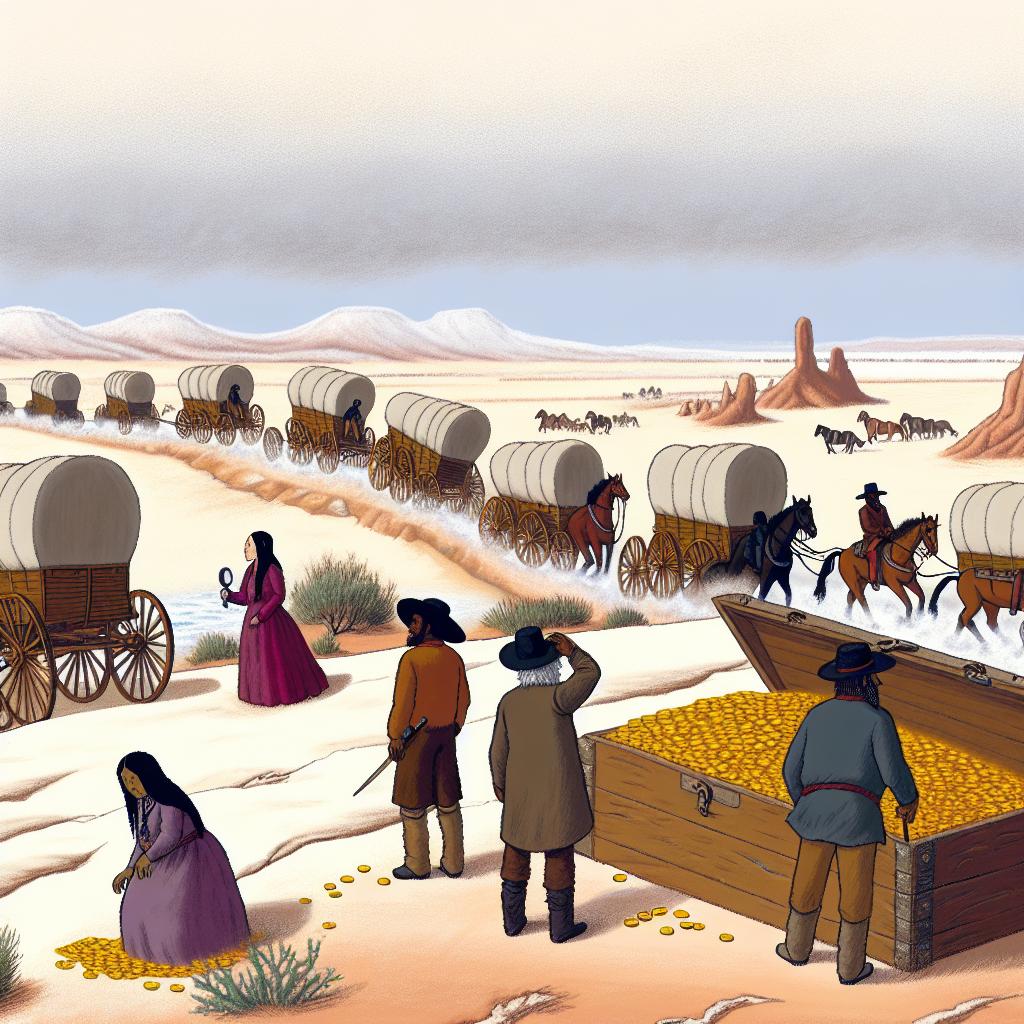The Santa Fe Expedition: An Overview
The Santa Fe Expedition, often referred to as the Texas Santa Fe Expedition, represents a significant yet ambitious undertaking by the Republic of Texas in 1841. This venture aimed to consolidate control over the bustling trade routes linking Texas to Santa Fe, which was part of the Mexican territory during that time. The endeavor has carved a notable place in Texan history, celebrated for its audacity yet marred by tribulation and, eventually, its failure.
Background and Objectives
The primary goal was establishing a trade corridor between Texas and Mexico by paving a pathway to Santa Fe, thereby enabling Texans to trade goods with local residents. This initiative was not merely economic but also driven by geopolitical incentives, primarily to expand Texas territory and potentially annex Santa Fe into the Republic. Despite the significance of the objectives, the planning and execution were noted for being hasty and lacking foresight.
The Journey to Santa Fe
Commencing in June 1841, the expedition set forth with approximately 320 men departing from Austin, Texas. The group was led by Commander Hugh McLeod and Dr. Richard F. Brenham, a commissioner designated by Texas President Mirabeau B. Lamar. The expedition members ventured forth with visions of monetary gain and extending Texas’s geopolitical sway. However, they soon encountered numerous adversities, including arduous landscapes, insufficient supplies, and a dearth of accurate navigational charts.
As they traversed the rough terrains, the hostility of the environment posed significant difficulties. The expedition, marred by a lack of preparation, confronted challenges at every twist and turn. From trekking through barren lands with limited water to improvising solutions for food shortages, the journey highlighted the precarious balance between human resolve and nature’s formidable challenges.
Challenges and Capture
As the expedition progressed, it was increasingly beset by extreme conditions and internal discord. The party meandered through uncharted territories, confronting obstacles that ranged from a dire scarcity of water and sustenance to unfriendly encounters with Native American tribes. Their plight culminated as they approached Santa Fe, where rather than being greeted hospitably, they were met with resistance. Viewing the expedition as an invasive act, the local authorities detained the adventurers. They were captured by Mexican military forces under the command of Governor Manuel Armijo and endured a grueling forced march approximately 2,000 miles to Mexico City.
The journey to Mexico City was harsh, marked by physical and psychological trials. The captured Texans faced deplorable conditions, illness, and even death during their arduous trek, which further underscores the high human cost of the venture.
The Aftermath
From a strategic perspective, the Santa Fe Expedition’s outcome was dismal. Despite the lofty ambitions presented by the Republic of Texas, Santa Fe persisted under Mexican governance until 1848 when the region was ceded to the United States. Although the prisoners from the expedition were eventually released, the campaign left a profound mark on Texan history, serving as a stark illustration of the trials associated with territorial expansion of that era. Additionally, it underscored the diplomatic intricacies and military realities that intertwined with such geopolitical aspirations.
The prospects for wealth, one of the expedition’s pivotal motivations, were never realized. As a result, the expedition is often remembered through the lenses of hardship and disappointment. Nevertheless, it stands as a poignant reflection of the ambitions that characterized the early years of the Republic of Texas. Despite its failure, the expedition illuminates the aspirations and resilience of a nascent nation seeking to carve out its place on the continental stage.
For individuals keen on delving deeper into this era’s history, a wealth of resources await. One can explore detailed accounts and narratives found in historical texts, diaries, and primary sources from the 19th century, all of which provide richer context. These documents offer insights into the motivating forces, first-hand experiences, and eventual outcomes of the Santa Fe Expedition, painting a vivid portrait of this adventurous yet fraught chapter in Texan history.


